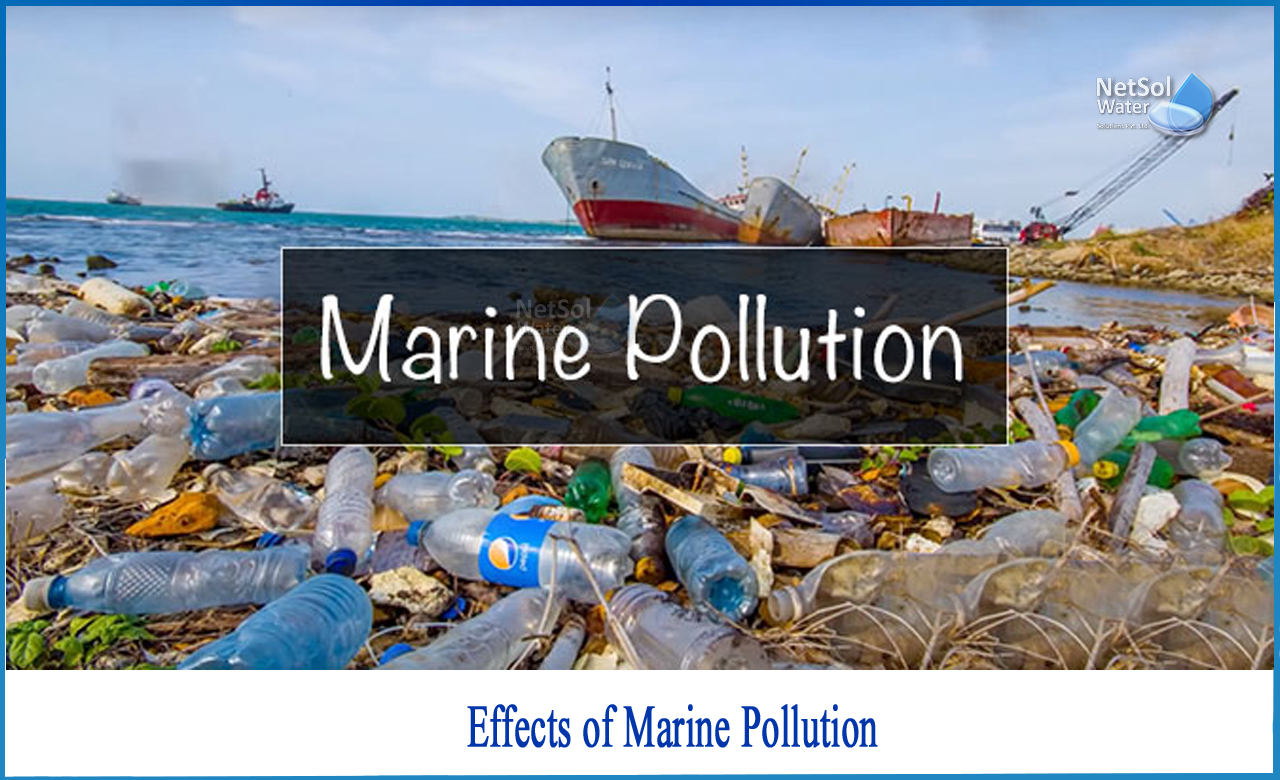What are the Effects of marine pollution?
In this blog we discuss effects and cause of marine pollution.
1: Ocean Acidification
The intake of carbon dioxide (CO2) from the atmosphere causes ocean acidification, which is the continual decline in the pH value of the Earth's oceans.
The burning of fossil fuels is the primary cause of ocean acidification. One of the many repercussions of climate change on the oceans is ocean acidification. Rather than a move to acidic circumstances, ocean acidification includes a shift to pH-neutral conditions (pH 7). Seawater is slightly basic (meaning pH > 7), and ocean acidification includes a shift towards pH-neutral conditions instead of a transition to acidic conditions (pH 7).
Is it a source of concern?
Ocean acidification is a source of concern since it can lead to a decline in the synthesis of calcium carbonate shells in shellfish and other aquatic life, as well as other physiological issues for marine organisms.Under high saturated acidotic fluids, calcium carbonate shelled microorganisms are still unable to reproduce.
How is ocean acidity increased?
In seas, rivers, and lakes, an estimated 30–40 percent of the carbon dioxide released into the atmosphere by human activity dissolves. When it reacts with water, some of it produces carbonic acid. Some of the carbonic acid molecules that arise split into a bicarbonate ion and a hydrogen ion, increasing ocean acidity (H+ ion concentration).
Ocean acidification has been dubbed the "evil doppelganger of global warming" and "the second CO2 problem" after being compared to anthropogenic climate change. Even though this is a more complex and less evident occurrence, freshwater bodies appear to be acidifying as well.
2: Under Water Noise
Passing ships, oil drilling seismic surveys, and naval low-frequency active sonar can all cause noise or sound pollution, which can be harmful to marine life. In the sea, sound travels faster and over longer distances than it does in the atmosphere. Noise pollution at sea is akin to death by a thousand cuts.
Each sound may not be alarming in and of itself, but when combined, the noise from shipping, seismic studies, and military operations creates a very different environment than before. Cnidarians and Ctenophore, which are vital creatures in the marine ecology, can be harmed by noise from ships and human activity.
3: Plastic Pollution
Plastic pollution in the ocean is a type of marine pollution caused by plastics, which can range in size from big original materials like bottles and bags to microplastics created by fragmenting plastic material. The majority of marine debris is abandoned human garbage that floats or is suspended in the ocean. Plastic makes up 80% of marine garbage.
Effect of micro and Nano-plastics
Microplastics and Nanoplastics are formed when plastic debris breaks down or photodegrades in surface waters, rivers, or oceans. Plastic particles varying in size from large original material such as bottles and bags to microplastics generated by fragmentation of plastic material pollute the oceans.Since this material degrades slowly or is not removed from the ocean, plastic particles have become prevalent throughout the surface ocean and are recognized to harm marine life.
Entanglement, asphyxia, and ingestion are all threats to aquatic life. Fishermen can leave or lose fishing nets, which are mainly composed of plastic, in the ocean. Ocean plastics come in a variety of shapes and sizes, each posing a threat to marine life. Bottle caps have been discovered in the stomachs of turtles and seabirds who died as a result of their respiratory and digestive tracts becoming obstructed.
Ghostnets are another troublesome sort of ocean plastic since they can imprison marine life indefinitely, a practise known as "ghost fishing."
4: Nutrient Pollution
Eutrophication is defined as an increase in chemical nutrients in an environment, often nitrogen or phosphorus-containing compounds. It can lead to an increase in primary productivity (excessive plant growth and degradation) as well as other negative consequences such as a lack of oxygen and severe declines in quality of water, fish, and other animal populations.
Nutrient pollution is a type of water pollution that occurs when nutrients are added in excess. Excess nutrients, mainly nitrates or phosphates, increase algal development, which is a fundamental cause of eutrophication of surface waterways. Such blooms are natural, but they may be becoming more common as a result of anthropogenic inputs, or they may be something that is now being more closely observed and hence more commonly reported.
Conclusion
The main culprits are rivers that run into the ocean, as well as various chemicals used as fertilisers in agriculture, as well as waste from livestock and humans. An excess of oxygen-depleting chemicals in the water can cause hypoxia and the establishment of a dead zone.
Netsol Water is Greater Noida-based leading water & wastewater treatment plant manufacturer. We are industry's most demanding company based on client review and work quality. We are known as best commercial RO plant manufacturers, industrial RO plant manufacturer, sewage treatment plant manufacturer, Water Softener Plant Manufacturers and effluent treatment plant manufacturers. Apart from this 24x7 customer support is our USP. Call on +91-9650608473, or write us at enquiry@netsolwater.com for any support, inquiry or product-purchase related query.



